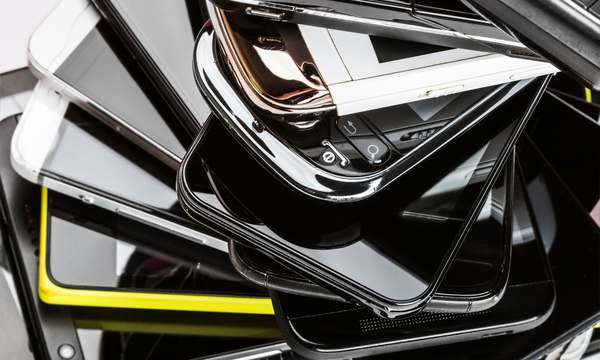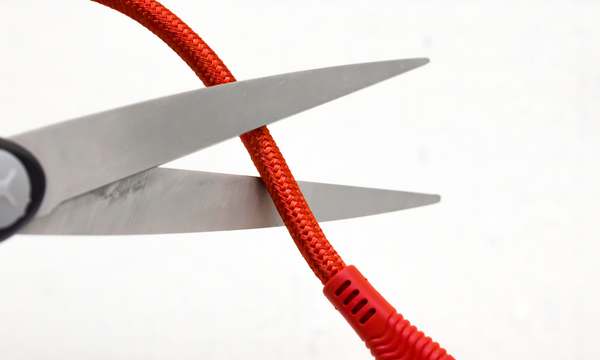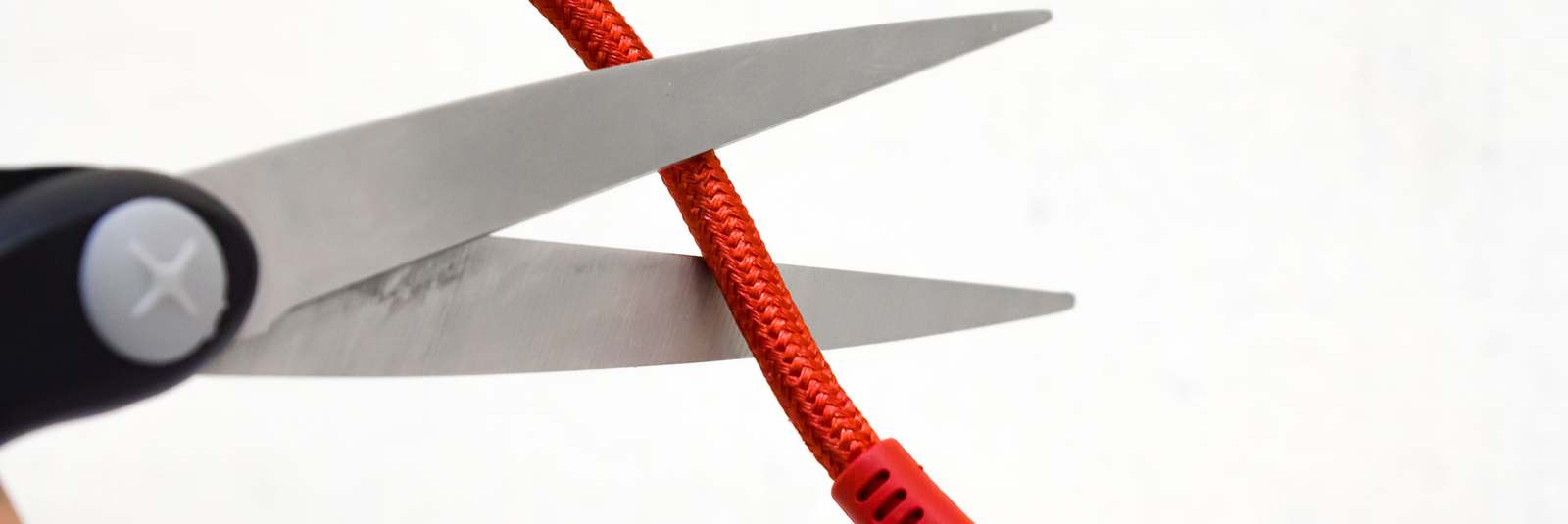
Charging Matters
This article is from the CW Journal archive.
Using a Qi wireless charger is never as painless as you would hope it would be. The need to accurately align charging coils makes it finnicky to a level where you might as well not bother. Limits on how much current can be transferred mean charging is slow. Starbucks has removed wireless chargers from its shops. What promises so much delivers so little but the new science of metamaterials addresses these issues, a new spin-out from Oxford University is showing how they can be applied.
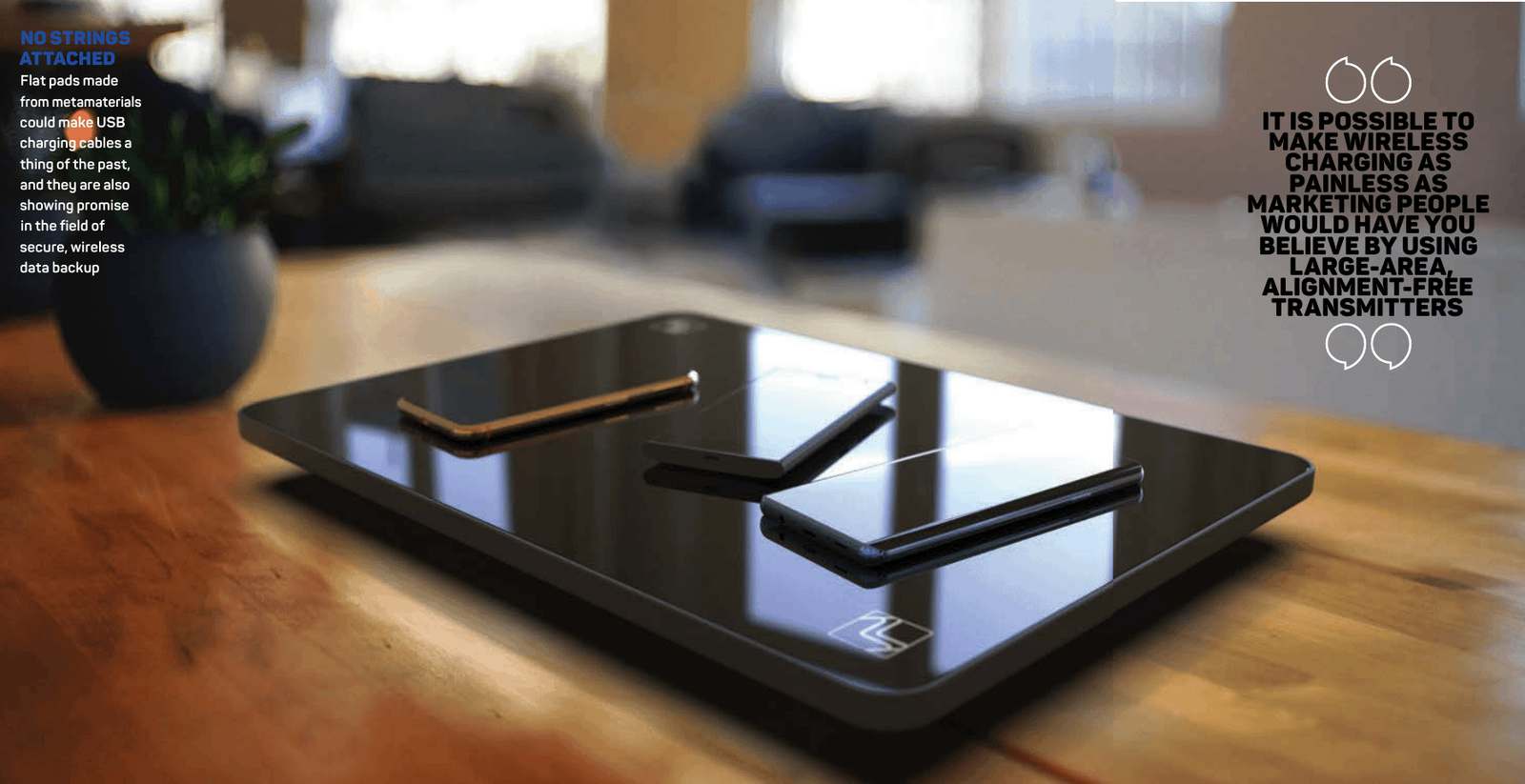
Wireless POWER transfer has been known about ever since Nikola Tesla’s famous experiments in the early 1900s showed how it was possible to light up bulbs from a distance through the air. He demonstrated that oscillating electric and magnetic fields induced between metallic sheets or induction loops allowed power transfer between physically disconnected systems.
Today, we take it for granted that we can safely splash electric toothbrushes with water in to the same degree we did with their manual predecessors – and it is wireless charging, inductive in this case, that made this waterproof solution possible. Now, wireless charging is becoming a key feature in high-end mobile phones.
These new charging methods in mobile phones come in different shapes and sizes. The latest phones come with an integrated wireless receiver; for older phones, there are external chargers that are so slim they can easily fit into a phone case. In fact, wireless-charging transmitters were available some time before mobile phones gained the facility to include integrated wireless-charging receivers. Most of the early adopters used an interface standard known as Qi, where power is transmitted at low frequencies between 100 kHz and 200 kHz. A higher-frequency alternative called Rezence now offers resonant inductive power transfer using 6.78 MHz.
State-of-the art wireless charging delivers power to a single device from a single transmitter but requires reasonable alignment between them. Really, this is only a small step away from plugging and unplugging a wired charger. It is possible to make wireless charging as painless as marketing people would have you believe by using large-area, alignment-free transmitters.
Inspiration for breakthrough technologies often comes from seemingly-unrelated areas – and one technique being investigated by Oxford startup Metaboards came from the world of metamaterials.
|
GET CW JOURNAL ARTICLES STRAIGHT TO YOUR INBOX Subscribe now |
Metamaterials are synthetic composite materials that exhibit properties not generally found in nature. The composite material contains artificial structures composed of small resonant elements, called ‘meta-atoms’. Pre-engineered laws of dispersion make waves of a certain nature interact with a metamaterial in an unusual way. Meta-atoms do not need to be as small as physical atoms - they only need to be much smaller than the wavelength of that specific wave. Inspired by the ongoing research into creating a ‘cloak of invisibility’, other metamaterial technologies are appearing in advanced antenna technologies and optical filters.
An electromagnetic metamaterial is formed of coupled, electrically-small, resonant elements arranged in a lattice, which may be periodic, quasi-periodic or even disordered. When coupling between meta-atoms is inductive, the metamaterial can support magneto-inductive waves: waves of inter-element excitation propagating through a metamaterial – much like phonons create collective excitation in crystal lattices. These waves are confined within a metamaterial and their properties are defined by the individual properties of meta-atoms and the strengths of their coupling to the rest of the metamaterial elements.
Magneto-inductive waves, excited in a metamaterial of finite size, reflect from its boundaries to form standing-wave patterns of current intensities in meta-atoms. In turn, this induces a specific near-field-magnetic-field profile directly above the metamaterial.
Due to their highly-dispersive nature, magneto-inductive waves can be slow and short. In a simple metamaterial, where all meta-atoms resonate at the same frequency and are approximately 500 times smaller than the corresponding free-space resonance wavelengths, a magneto-inductive wave launched at a given carrier frequency can have a wavelength approximately 200 times shorter than that of a corresponding electromagnetic wave in free space. This means a manageable 20cms, compared to the free-space 44 metres of Rezence’s 6.78 MHz power transmission frequency.
|
DO YOU HAVE A VIEW ON THIS SUBJECT, OR RESPONSE YOU'D LIKE TO SHARE? |
Strong two-dimensional dispersion, on the other hand, is difficult to handle. Magneto-inductive waves excited at a given frequency will propagate across the array of coils in the directions defined by the metamaterial lattice. If a metamaterial comprises meta-atoms resonant at the same frequency, then magneto-inductive waves become most dispersive when carrying meta-atom excitation at frequencies close to this resonance frequency.
Within a finite array of resonators, magneto-inductive waves are reflected from the system’s boundaries forming two-dimensional standing wave patterns of current intensities – in accordance with the spatial dispersion at the frequency of excitation. In the near-field area just above the metamaterial, these standing magneto-inductive waves create a magnetic-field pattern oscillating at the frequency of the magneto-inductive wave that induces them.
Fig 1 shows an example of current intensities distribution in a subwavelength-sized metamaterial made of 49 meta-atoms in a 7x7 array and supporting magneto-inductive waves. Here, all the constituent meta-atoms are resonant circuits tuned to the same frequency. They are strongly coupled to each other via magnetic induction as shown by coupling coefficients k1 to k4. The central element is connected to a source of AC current, oscillating at the resonant frequency of the meta-atoms.
Coloured background patches depict the amplitudes of currents induced in each of the meta-atoms. A predominantly diagonal propagation of magneto-inductive waves, as defined by the dispersion law at this frequency for square lattices of meta-atoms, and their reflection from the boundaries of the structure determine the resulting standing-wave pattern of the current amplitudes.
Special boundary conditions and meta-atom and lattice design methods applied to the metamaterial can create a nearly uniform distribution of magnetic field amplitude above its surface. This allows wireless energy harvesting across wide areas with virtually no limitations on shape or size. This regime is the most appropriate for low-power solutions where a metamaterial-based transmitter is expected to deliver power to multiple devices simultaneously, regardless of their position.
Fig 2 shows a numerical example of a quasi-uniform distribution of power-transfer efficiency when a standard inductive receiver, with a fixed 10 ohm load, is scanned above a Metaboards 50cm by 70cm prototype charging pad.
Mobile phones and larger electronic devices needing over one watt of input power per device need targeted power delivery. Metaboards’ proprietary products allow for both identifying the relative position of the receiver device and controlled power delivery to the desired area.
This concept is illustrated in Fig 3. By controlling the elements of the metamaterial electronically and wirelessly, we can apply local changes to the medium supporting magneto-inductive waves. Additional resonant control circuits, depicted schematically as arrows, change the electrical properties of specific meta-atoms on demand and create scattering defects in the lattice. The direction of propagation of the power-carrying, magneto-inductive wave scattering on this defect can be controlled by using the known dispersion characteristics of the metamaterial.
Multiple receivers can be charged simultaneously and powered anywhere above the transmitting metamaterial surface. The control elements in the meta-atoms ensure that the standing magneto-inductive waves provide the right balance of current amplitudes and phases in the circuits near the receiver.
As a result, a magnetic-field ‘hot spot’ appears right where the receiver is located. The control unit continuously polls for any change, for example the appearance of an additional receiving device or a foreign object.
What does large-area wireless charging mean to our everyday life? Maybe in the future when you wake up in the middle of the night and realise you forgot to put the phone on charge, it will not be necessary to switch on the lights to find and connect the charging cable. You will be able to put the phone anywhere on a large charging pad without worrying whether the alignment is right.
Beyond just charging the phone, a further step can be taken to exploit the utility of metamaterial chargers.
Although a phone’s data should be backed-up regularly, it usually takes a conscious effort to perform this routine operation, especially for those who do not use cloud technology. The question is: can metamaterials be trained to help everyone out?
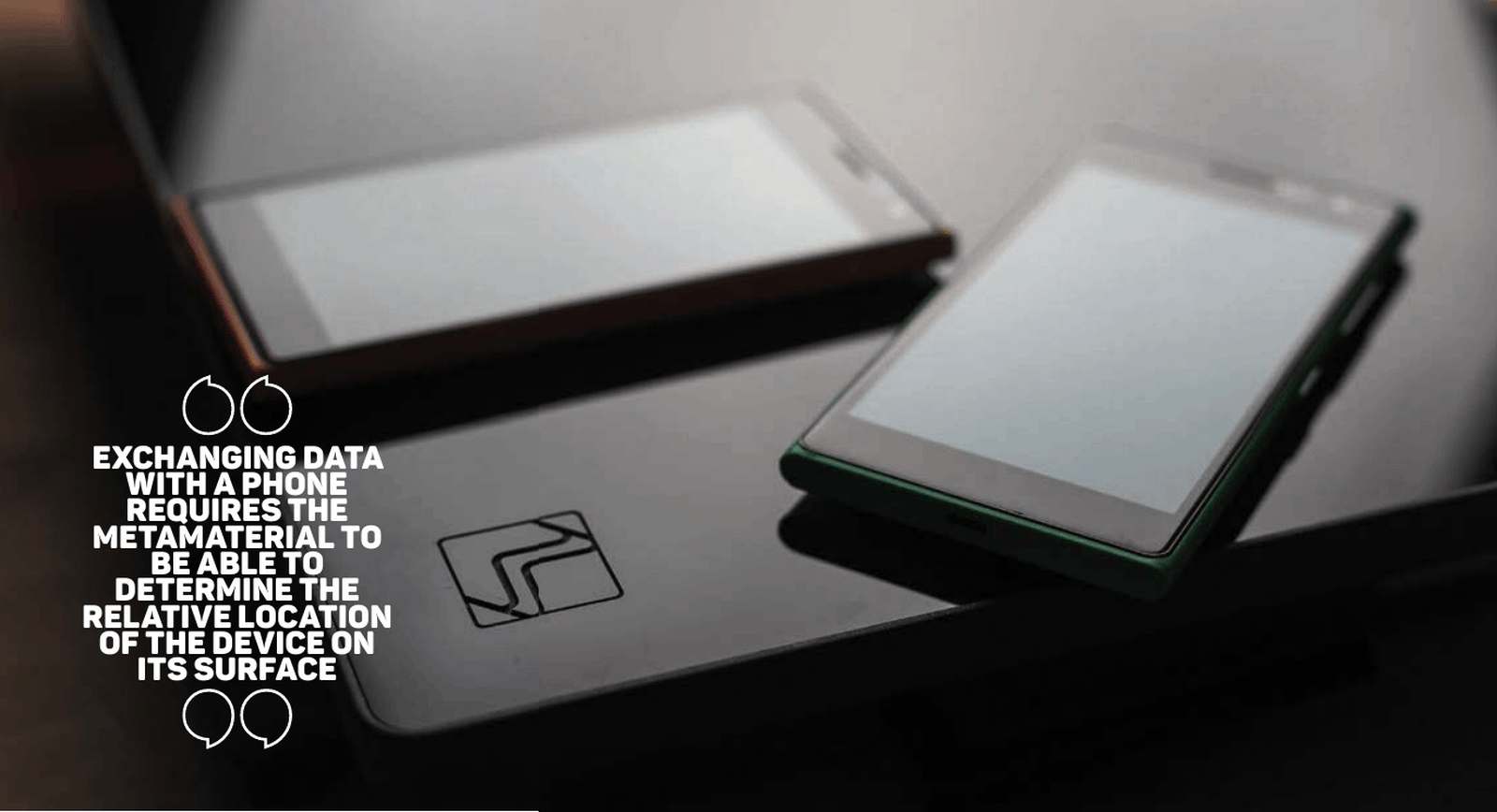
It turns out that a metamaterial charger has the capacity to function as a backup hub. Similar to the principle behind bandpass filters based on multiresonators, the coupling strength and individual properties of resonant meta-atoms in a metamaterial define a band of frequencies at which magneto-inductive waves are allowed to propagate within the structure.
Proof-of-concept devices can achieve bandwidths extending to over 30 per cent of the central frequency. At a central frequency of 40.56 MHz, for example, a metamaterial can carry signals within a 12 MHz band.
Fig 4 illustrates a metamaterial-based device where an additional layer of metamaterial structure is added to allow for charging and backup of a phone. The strong dispersion of carrier waves and reverberation induced by the finite size of the structure make reliable and bi-directional transmission of data through a metamaterial-based data transmitter a non-trivial task. At Metaboards, we have had to develop communication protocols that can handle the anisotropy induced by the strong two-dimensional dispersion of magneto-inductive waves and the ever-changing environment of a system based on tuneable metamaterials.
It is estimated that data transmission will be possible at a rate of over 25 Mbps, assuming a signal-to-noise ratio of 10dB. With further development transmission rates could eventually be pushed to a significantly larger degree.
Similar to power transfer extended in two dimensions, exchanging data with a phone requires the metamaterial to be able to determine the relative location of the device on its surface. Awareness of the positioning of the device is also a key feature for the central transmitter as it needs to work through a communication protocol created specifically for the strongly dispersive medium. On top of that, local control of the metamaterial elements will change the condition of the environment on demand at any time.
Imagine trying to enjoy a concert on a radio in a reverberation chamber where the walls bend and change. In addition to that, picture the room filled with metal springs and cushions to add strong dispersion of the acoustic waves. This extremely noisy environment is comparable to the challenge of training metamaterials to reliably transfer data to and from the central control unit to the devices.
Once a connection is established, near-field data transfer can begin and the phone can send its backup stream to the charger’s central unit. Now add the option of doing the same thing for more than one phone at a time and the complexity of the task is clear.
The base unit will obviously need to have sufficient storage capacity to accommodate data from all devices with backup permissions and, as the process happens in the near-field area close to the charging pad, it keeps any personal information secure because no data leaves the room.
Everything about metamaterials may sound like science fiction but it is rapidly becoming fact and, as well as requiring scientific and engineering knowhow, it takes a bold approach and dedication to step out of the realm of conventional technology. There may be nothing new about resonant circuits and inductive coupling but metamaterials offer a new vision that goes beyond anything possible today.
It may be a long time before invisibility cloaks hit the market but, in the meantime, metamaterials are set to revolutionise wireless charging and contactless data transfer to open the way to enabling a new class of devices and experiences.
- 1 L. Solymar, E. Shamonina, Waves in Metamaterials, Oxford University Press, 2009.
|
GET INVOLVED WITH THE CW JOURNAL & OTHER CW ACTIVITIES |
Irina Khromova is the head of science and technology at Metaboards. Her scientific and technical expertise covers metamaterials, wireless technologies, antenna engineering, and terahertz science and technology. Prior to joining Metaboards, she was an assistant professor at the Public University of Navarra and a research associate at King’s College London. Khromova has a PhD in telecommunications engineering and another in laser physics.


